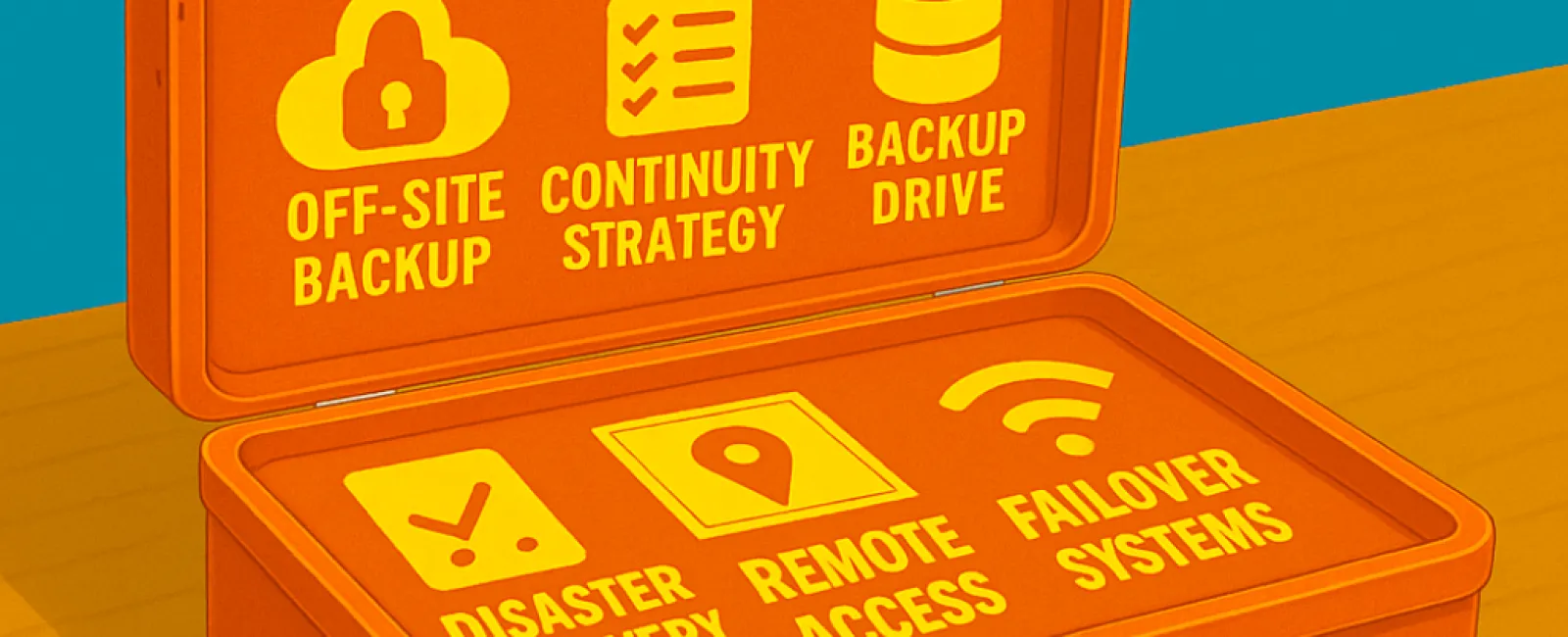July 28, 2025
Unexpected events like power outages, cyberattacks, hardware malfunctions, and natural disasters can strike without warning, causing severe disruption to small businesses. Many believe that simply having backups is sufficient, but recovering a file is not the same as maintaining full business operations. Without access to your systems, the ability to support remote work, and clear communication with your team and clients, even brief interruptions can lead to long-term damage. Your IT partner must do more than just provide backups—they need to deliver a comprehensive strategy that keeps your business fully functional under any circumstance.
Backups Alone Won't Cut It—You Need a Robust Continuity Plan
Backups are crucial, but they only address part of the challenge. What truly matters is a business continuity plan—a forward-thinking approach designed to keep your operations running smoothly during and after any crisis.
When your systems fail, files become unreachable, or your office is compromised, a backup stored locally offers little relief. Without a detailed plan to rapidly restore operations, your business faces significant risks, including lost revenue, damaged reputation, and compliance issues.
Understanding the Critical Difference: Backups vs. Business Continuity
Many businesses misunderstand this key distinction:
● Backups enable data restoration.
● Continuity ensures your business stays operational regardless of the situation.
A comprehensive continuity plan addresses vital questions such as:
● How quickly can we recover?
● Where will our team work if the office is inaccessible?
● Which systems are essential for daily operations?
● Who is responsible for initiating the recovery process?
It also includes critical elements like:
● Encrypted, off-site, and immutable backups
● Clearly defined recovery objectives (RTO/RPO)
● Preparedness for remote work scenarios
● Redundant systems and automatic failover mechanisms
● Regular disaster recovery drills and testing
If your IT provider can't confidently guide you through these critical components, you aren't truly protected—you're just fortunate until disaster strikes.
Could This Really Happen to Your Business?
This isn't just a scare tactic. These are real-world events causing real damage. Consider recent incidents:
● Florida hurricanes forced hundreds of businesses to shut down, with those lacking cloud access completely immobilized.
● North Carolina floods wiped out on-site servers, erasing months of critical records and invoices.
● California wildfires destroyed entire office buildings in Pacific Palisades, many without any off-site recovery plans.
● Numerous small businesses struck by ransomware discovered their backups were either corrupted or never tested.
Disasters don't discriminate by company size—they impact businesses like yours every day.
Ask Yourself These Crucial Questions Today
If disaster struck tomorrow, could your business continue operating?
Challenge your IT provider with these questions:
● In the event of ransomware, how quickly can we recover?
● Are our backups regularly tested, and which systems do they cover?
● What is the contingency plan if a flood or fire renders our office unusable?
● Does our continuity plan comply with applicable industry regulations?
● Can we maintain client services if our team must work remotely?
If you don't feel completely certain about the answers, your business may already be vulnerable.
Disasters Are Inevitable. Downtime Doesn't Have To Be.
While you can't prevent every outage, storm, or cyberattack, you can control how your business responds.
A competent IT provider helps you bounce back.
A truly exceptional one ensures your business never misses a beat.
Ready to assess your business's resilience?
Click Here or call us at 973-439-0306 to schedule your FREE 10-Minute Discovery Call and let's ensure a disaster never leads to downtime.





